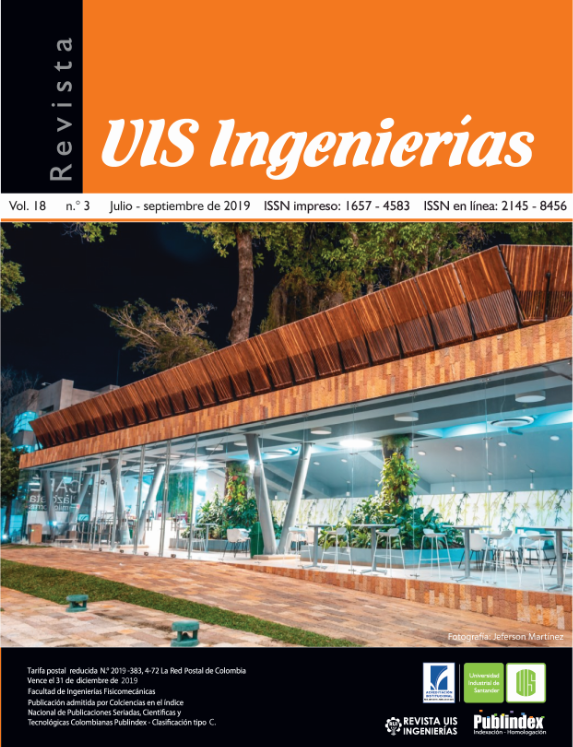Support charges for the use of the electric grid in the unit cost of distributed energy: challenges and opportunities for planning
Published 2019-04-11
Keywords
- energy regulation,
- distributed energy resources,
- network planning,
- backup charges,
- network operator
How to Cite
Abstract
With the technological advance in electricity generation techniques and the prevailing need for sustainable development of countries, the massive use of alternative energies has been in force for the last 15 years, with clear goals towards 2020 for sustainable development. At the regulatory level, Colombia cannot be left behind in the regulation, and progress has already been made on the subject with law 1715 of 2014 and several decrees of incentives in the promotion of renewable energies. The objective of this paper is to show the state of the art on the way in which the net balance and residential energy self-consumption by DER is handled by several tax regulations in different countries of Europe; moreover, it will also go into detail about the advantages offered by using a selected methodology to consider fair charges of support for the use of the electrical network by generators distributed from photovoltaic solar energy, all this as a contribution to advances already made in this field. This is provided from a network planning approach, in which a long-term methodology is selected that efficiently integrates the distributed generation into the interconnected system and allows transition periods in its implementation to avoid disruption of network operators (ORs). Likewise, this analysis is supported by the simulated operation of a system with DER together with the changes in load flows due to decongestion and surplus injection that the electric system has in the scenario of massive use of these resources.
Downloads
References
[2] P. M. D. O. Jesus, M. T. P. De Leao, J. M. Yusta, and H. M. Khodr, “A General Framework for the Remuneration of Costs and Benefits of Distributed Generation,” in 2006 IEEE/PES Transmission & Distribution Conference and Exposition: Latin America, 2006, pp. 1–6.
[3] U. D. Lubo Matallana, “Flujos De Cargas En Sistemas De Distribución Con Generación Distribuida,” Universidad del País Vasco, 2014.
[4] M. H. J. Bollen and F. Hassan, Integration of distributed generation in the power system, vol. 80. John wiley & sons, 2011.
[5] F. Laverón, “La Paridad de Red Eléctrica y el Balance Neto,” 2012.
[6] UPME. (2014). Análisis de costos de energías renovables. Bogotá: Proyecto UPME - BID para la promoción de las energías renovables en Colombia.
[7] T. E. Del Carpio-Huayllas, D. S. Ramos, and R. L. Vasquez-Arnez, “Feed-in and net metering tariffs: An assessment for their application on microgrid systems,” in 2012 Sixth IEEE/PES Transmission and Distribution: Latin America Conference and Exposition (T&D-LA), 2012, pp. 1–6. doi: 10.1109/TDC-LA.2012.6319070
[8] A. Held, M. Ragwitz, D. C. Huber, D. G. Resch, and D. T. Faber, “Feed-In Systems in Germany, Spain and Slovenia - A comparison -,” Karlsruhe, Germany, 20010.
[9] X. Zhong and K. L. Lo, “Development of distribution networks pricing with distributed generation,” in 2008 Third International Conference on Electric Utility Deregulation and Restructuring and Power Technologies, 2008, pp. 2769–2774.
[10] C. Tautiva, A. Cadena, and F. Rodriguez, “Optimal placement of distributed generation on distribution networks,” in 2008 IEEE/PES Transmission and Distribution Conference and Exposition: Latin America, T and D-LA, 2009, pp. 1–5. doi: 10.1109/TDC-LA.2008.4641762
[11] P. Williams and G. Strbac, “Costing and pricing of electricity distribution services,” Power Eng. J., vol. 15, no. 3, pp. 125–136, 2001. doi: 10.1049/pe:20010303
[12] F. Li, D. T. Narayana, P. Padhy, and J. Wang, “Network Benefits From Introducing An Economic Methodology For Distribution Charging,” Bath, 2005.
[13] J. Li, Z. Zhang, C. Gu, and F. Li, “Long-run incremental pricing based transmission charging method distinguishing demand and generation technologies,” in 2014 IEEE PES General Meeting | Conference & Exposition, 2014, pp. 1–5. doi: 10.1109/PESGM.2014.6939354
[14] U. Lubo, “Estudio del impacto sobre el esquema tarifario del servicio de energía eléctrica con el uso masivo de Generación Distribuida en Colombia,” Universidad Nacional de Colombia, 2017.
[15] Resoluciones CREG: www.creg.gov.co

